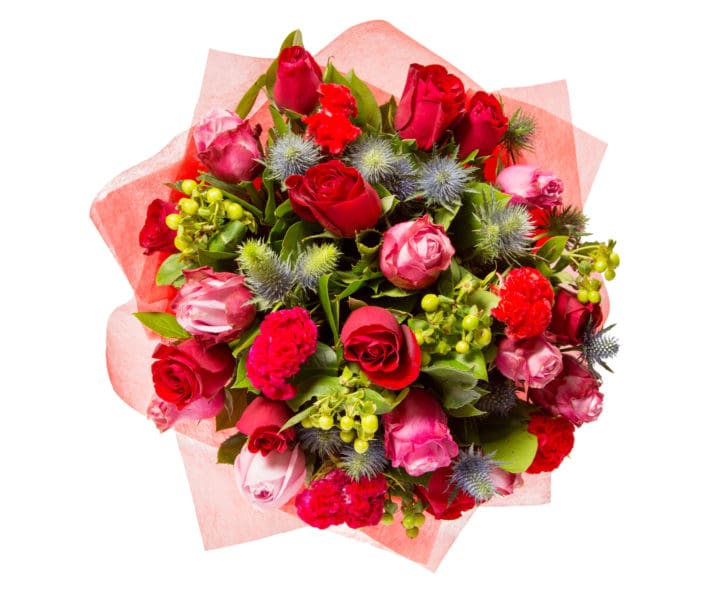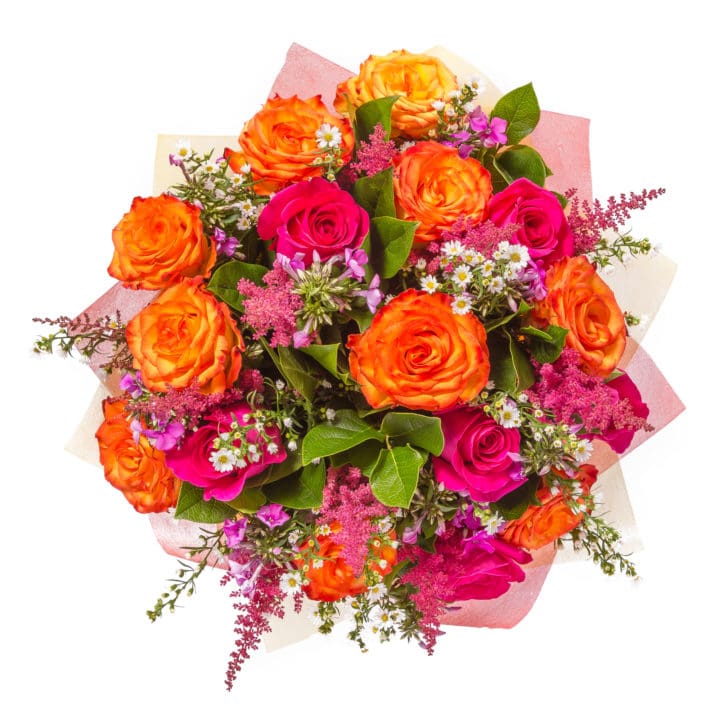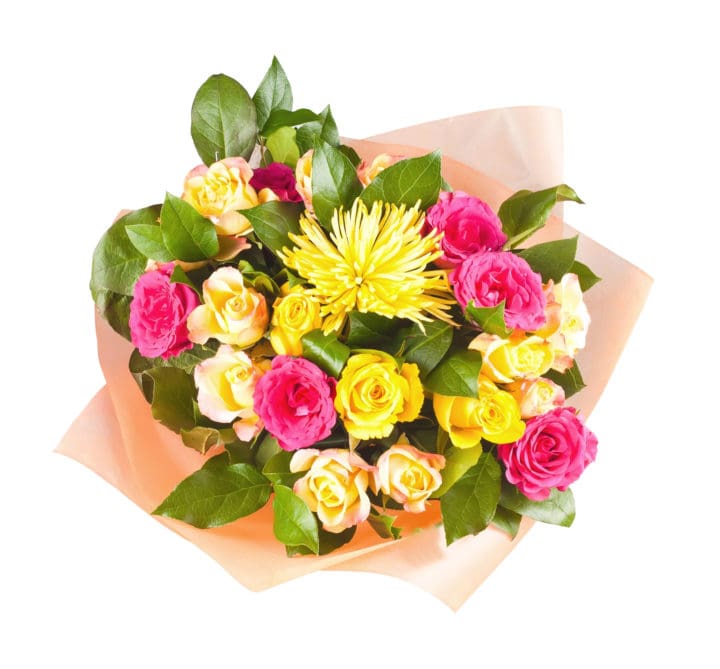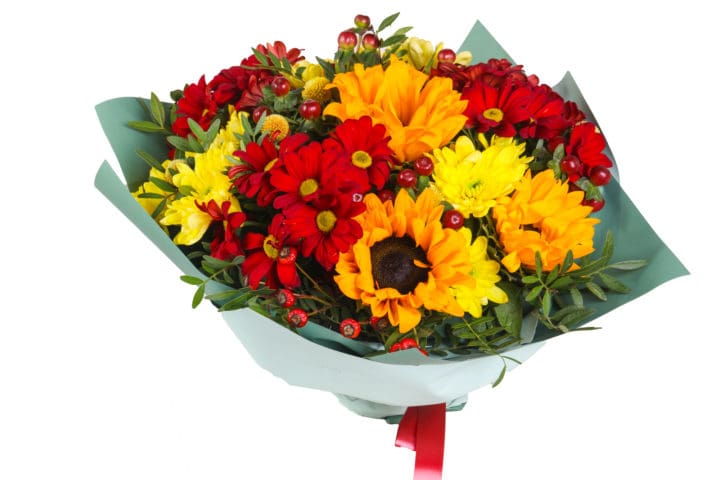Valentine’s Day Flowers
Valentine's Day Flowers
The tradition of sending Valentine's Day flowers stretches back centuries, with roots in both ancient practices and later cultural developments. Sending flowers on Valentine's Day has a long and fascinating history, with influences reaching back to ancient Rome and blossoming (pun intended) into the vibrant tradition we know today. Below is a glimpse into its evolution. We hope that this Valentine's Day Flowers post inspires you.

Image from Depositphotos
Valentine's Day Flowers
Early Whispers of Romance
- Ancient Rome: While not directly linked to February 14th, the Roman festival of Lupercalia, held in mid-February, celebrated fertility and love. Romans exchanged flowers during this time, potentially laying the groundwork for later associations.
- Victorian Era: This period saw a surge in the popularity of floriography, the “language of flowers,” where each bloom held a specific meaning. This allowed for subtle expressions of love and admiration, especially given the social constraints of the time. Red roses, symbolizing passion and romance, became synonymous with Valentine's Day.
- Medieval Europe: St. Valentine, a martyred saint associated with love, became linked to February 14th. Legends arose about him secretly performing weddings or sending love notes to prisoners.
How to Make Flowers Last Longer in The Vase
18th Century Bloom
- King Charles II of Sweden: He's often credited with popularizing the act of sending flowers as romantic gestures after encountering the “language of flowers” during a trip to Persia. This practice spread throughout Europe, making floral arrangements a cherished way to communicate emotions.
- Victorian Era (18th-19th Centuries): This period saw a surge in Valentine's Day popularity and the widespread use of floriography. Red roses, symbolizing passion, became the star of the show. Strict social norms made flowers a safe and elegant way to express hidden feelings.

Image from Depositphotos
Modern-Day Expressions
- 20th and 21st centuries: The tradition of Valentine's Day flowers continued to flourish, fueled by advancements in flower cultivation and transportation. The selection of flowers expanded beyond roses, catering to diverse preferences and meanings. Today, sending Valentine's Day flowers remains a widely celebrated custom, expressing love, appreciation, and affection beautifully and timelessly.
- 20th Century: The commercialization of Valentine's Day led to the mass production of roses and other flowers specifically for the occasion. Greeting cards and candies often accompanied floral gifts.
- Today: While roses remain popular, the flower choices have diversified, reflecting various emotions and styles. Online flower delivery services offer convenience and a wider selection.
4 Creative Ways To Use Tulip Bulbs In Your Garden
Most Popular Valentine's Day Flowers
- Red Roses: The undisputed champion of Valentine's Day flowers, red roses symbolize passionate love, desire, and romance. Their velvety texture, intoxicating fragrance, and timeless beauty make them a classic choice for expressing deep affection.
- Pink Roses: While red roses represent passionate love, pink roses symbolize admiration, gratitude, and appreciation. They are a perfect choice for expressing your affection for friends, family, or someone you have a crush on.
- Tulips: These cheerful and vibrant flowers come in a wide variety of colors, each with its meaning. Red tulips symbolize perfect love, pink tulips symbolize affection, and yellow tulips symbolize happiness and friendship.
- Lilies: Lilies are known for their elegant beauty and fragrance. Stargazer lilies, with their white petals and pink or red streaks, are popular choices for Valentine's Day as they symbolize purity and devotion.
- Carnations: While often associated with Mother's Day, carnations also make beautiful and affordable Valentine's Day gifts. Pink carnations symbolize admiration and gratitude, while red carnations symbolize deep love and affection.

Image from Depositphotos
- Hydrangeas: These full and fluffy blooms come in a variety of colors, including pink, blue, and purple. They symbolize gratitude, understanding, and heartfelt emotions, making them a thoughtful choice for Valentine's Day.
- Orchids: These exotic and elegant flowers symbolize luxury, refinement, and beauty. They are a perfect choice for someone special who appreciates unique and sophisticated gifts.
- Peonies: These large and fluffy flowers symbolize romance, prosperity, and good fortune. They are a popular choice for weddings and anniversaries, but can also be a stunning way to express your love on Valentine's Day.
- Ranunculus: These delicate and charming flowers come in a variety of colors, including pink, red, yellow, and orange. They symbolize charm, attraction, and radiance, making them a sweet and playful choice for Valentine's Day.
- Sunflowers: These bright and cheerful flowers symbolize happiness, admiration, and adoration. They are a unique and non-traditional choice for Valentine's Day, perfect for someone who appreciates sunshine and positive vibes.
Recipes with Fresh Edible Flowers
Facts about Flowers on Valentine's Day
- The red rose remains the most popular Valentine's Day flower, symbolizing passionate love and desire, followed by lilies, tulips, and carnations.
- Other popular choices include lilies (purity and devotion), tulips (perfect love), and carnations (admiration and gratitude).
- The tradition of sending anonymous Valentine's Day cards also emerged alongside the popularity of flowers, adding an element of mystery and intrigue to the day.
- The specific meaning of flowers can vary depending on culture and context.
- This flower-sending tradition continues to evolve, offering a beautiful and symbolic way to express love and affection.
- The first commercially produced Valentine's Day cards were sold in the mid-1800s, often featuring floral designs.
- Some cultures have unique flower traditions for Valentine's Day. In Japan, women traditionally give chocolate to men, while men reciprocate with flowers a month later on “White Day.”

Image from Depositphotos
Valentine's Day Flowers
I hope this historical overview gives you a deeper appreciation for the tradition of sending Valentine's Day flowers! The next time you send flowers for Valentine's Day, remember the rich history and symbolism behind this tradition, adding a deeper layer of meaning to your gesture. We hope that this Valentine's Day Flowers post inspires you. Happy Valentine's Day!

https://divinelifestyle.com/most-romantic-flowers-for-the-woman-you-love/
You May Also Like
